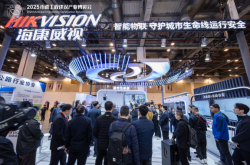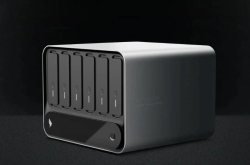Xiaomi YU7 Unveiled, Reigniting Intense Competition in the Automotive Industry
![]() 05/23 2025
05/23 2025
![]() 433
433
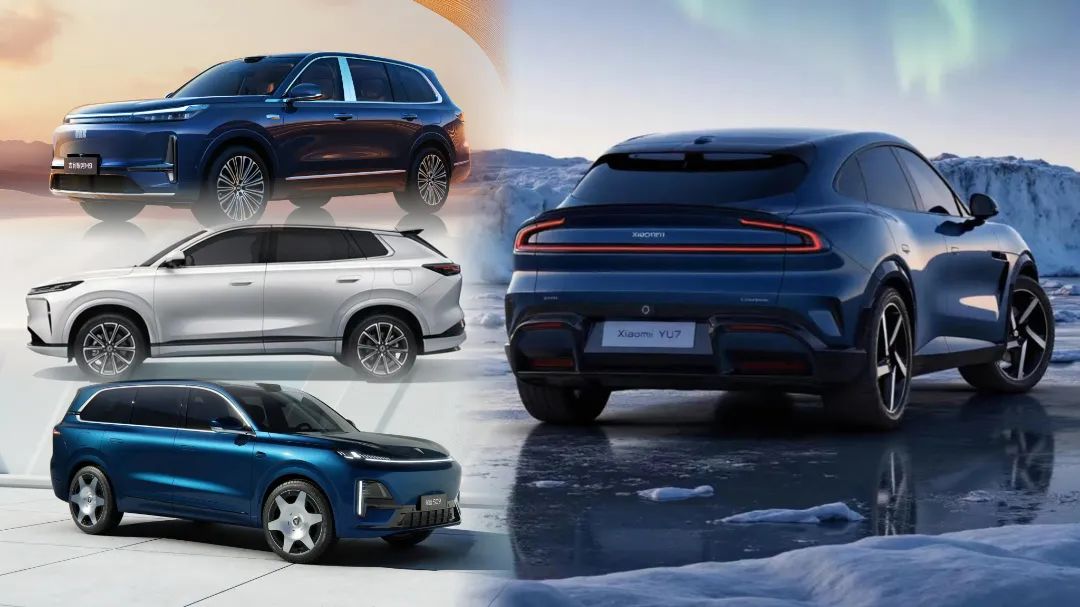
Introduction
Regardless of praise or criticism, Xiaomi remains the only company capable of igniting the entire automotive industry with a single new vehicle.
Within just one month, Xiaomi Automobile has experienced a rollercoaster ride, from being highly anticipated to navigating delicate waters. What exactly has transpired? Regardless, facing the challenges within the automotive industry, Lei Jun and Xiaomi must have a comprehensive response plan.
Earlier this year, Xiaomi set an annual sales target of 350,000 vehicles. With continuous orders for the SU7 and the difficulty in obtaining the SU7 Ultra, many believed this goal to be somewhat conservative. The buzz generated by Xiaomi Automobile across the automotive industry should propel Xiaomi's future development to new heights.
Unfortunately, the unpredictable nature of the Chinese automotive market often catches those at the peak off guard. Even powerhouses like Toyota and Volkswagen are not immune.
Over the past few decades, China's automotive industry has not only taught automakers how to create cars tailored to consumer tastes but has also made every participant vigilant against market fluctuations. For Xiaomi, a newcomer to the automotive scene, this holds true as well.
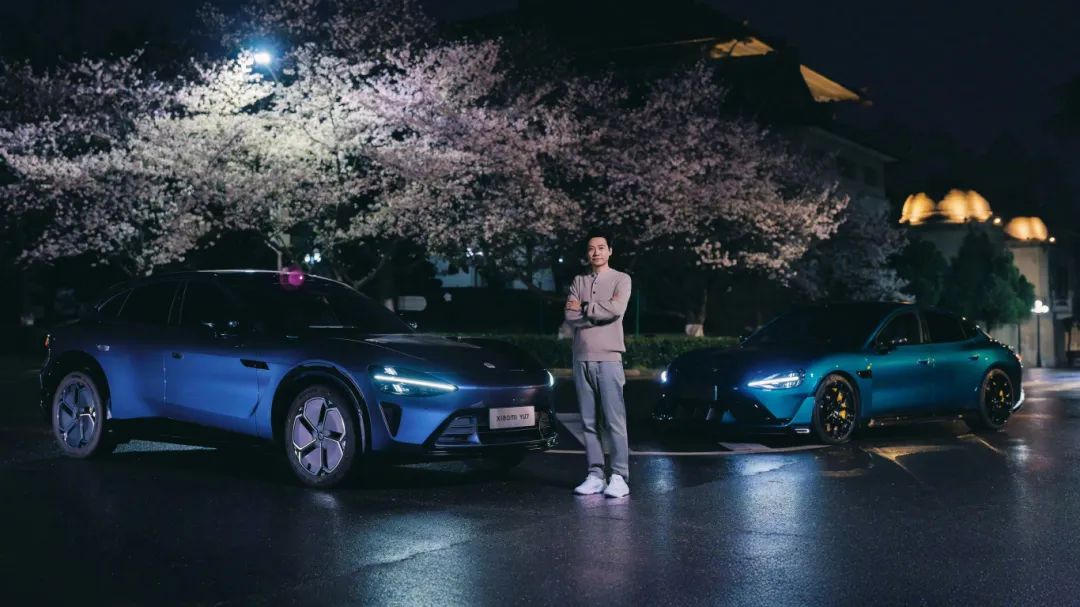
At this juncture, evaluating Xiaomi's recent events is meaningless. Standing at the heart of the automotive industry's development, it's crucial to understand that from SU7 to SU7 Ultra, and now to the upcoming YU7, Xiaomi, having witnessed the dual nature of the industry, cannot afford any missteps in its future product moves.
Moreover, on the same day Xiaomi officially released the YU7, several new SUV models, including the Geely Galaxy M9, Dongfeng L8, and Deep Blue S09, were also launched or unveiled. The external pressure faced by Xiaomi YU7 amidst this competitive landscape is palpable.
01 The Automotive Industry Remains in Constant Flux, and No One is Spared
2025 is destined to be a remarkable year. This is not only due to the market's development but also because the fall of numerous emerging automakers on the eve of dawn has brought profound reflections. In the past six months, the shadow of Jiyue's collapse lingers, and Nezha, backed by 360, has occasionally faced rumors of operational struggles.
After nearly a decade of development, new automakers have suffered numerous casualties, with only NIO, XPeng, Li Auto, and Zero Run surviving. Doesn't this illustrate that the path to automaking is far more arduous than commonly perceived? For any newcomer seeking to capitalize on the new energy market, there are no shortcuts.
Indeed, over the past year, Xiaomi, a first-time automaker, has experienced all the market preferences of a startup. With the cheers of brand fans, Xiaomi Automobile has almost become the most promising new energy automaker of this era. The buzz surrounding Lei Jun himself has propelled the company to the forefront of traditional automakers.
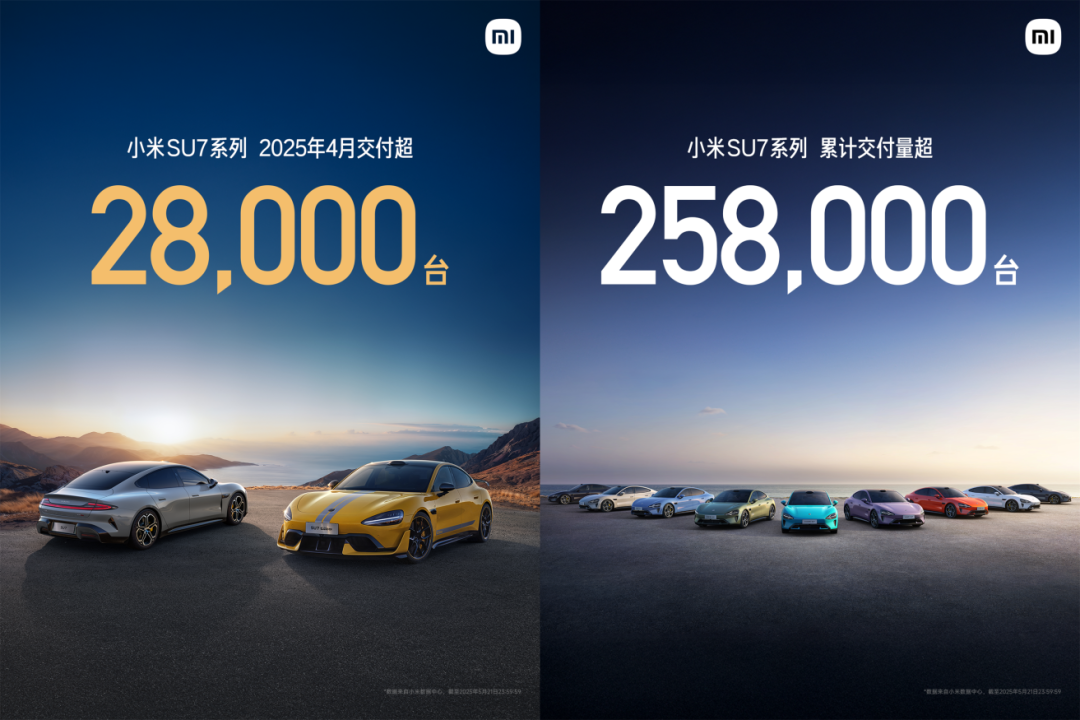
Regarding Xiaomi SU7's initial success, it's fair to say that there were few flaws exposing Xiaomi Automobile's vulnerabilities. Even if news indicates that SU7's order volume is starting to plateau, this may well be due to the imminent launch of the YU7. Consumers' hesitation in spending their money is simply a choice between buying the YU7 or the SU7.
And as expected, after a cooling-off period and Lei Jun's innovative marketing strategies for the YU7, sales are expected to be robust. However, the complexity of the Chinese automotive market is daunting. No one stays at the bottom forever, and no one remains at the top indefinitely.
In the new energy SUV market priced between 200,000 and 300,000 yuan, the number of players emerging this year has reached an almost unprecedented level.
Relying on industrial chain advantages, Lixiang and AITO continue their past strategies, expanding into the mid-to-large SUV market. Traditional automakers have launched numerous affordable and large new energy products, filling product gaps while lowering entry thresholds through price advantages. Profitability is secondary; capturing attention first is key.
Given this current landscape, from SU7 to YU7, Xiaomi's automaking aspirations have always been intertwined with sporty attributes. This means that compared to peers' new products focused mainly on household use and spaciousness, Xiaomi Automobile's audience expansion is limited. Being embraced by young people is a rare advantage in the early stages of brand establishment, but as the product matrix evolves, whether convergent product features can sustain brand vitality remains to be seen.
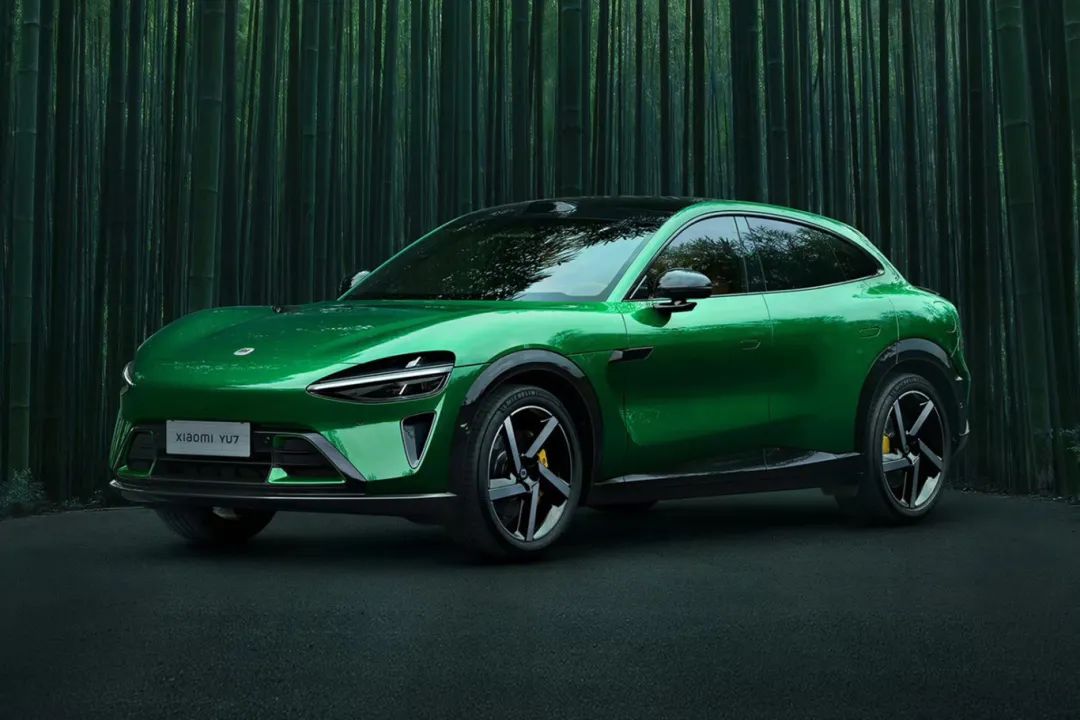
Over the past month, new cars like the Lingke 900 and AITO M8 have become instant hits upon launch, fundamentally addressing the needs of most ordinary people. A vast user base is the primary reason for these products' popularity.
With the further downward exploration of models like the Deep Blue S09 and Geely Galaxy M9, the SUV market is likely to focus comprehensively on such products. The characteristics of large and affordable products directly define the vehicle needs of potential consumers within a certain range, seemingly setting a foolproof development direction for the entire industry.
Perhaps precisely because of this situation, before last night's press conference, Lei Jun announced that the YU7's price would not be disclosed, nor would small reservations be opened. Taking advantage of the unveiling to first gauge reactions from various groups, including the automotive circle and consumers, is wiser than hastily sending the YU7 into the battlefield.
02 The Latecomer Xiaomi YU7 Cannot Afford Any Mistakes
The current state of the automotive market this year speaks for itself; anyone with discerning eyes can see it.
The sudden intensification of competition is no laughing matter. A flood of new cars coupled with an escalating price war keeps automakers on edge. Even at the technical level, the suspension of universal intelligent driving alone has inflicted tens of millions of points of damage on every participant.
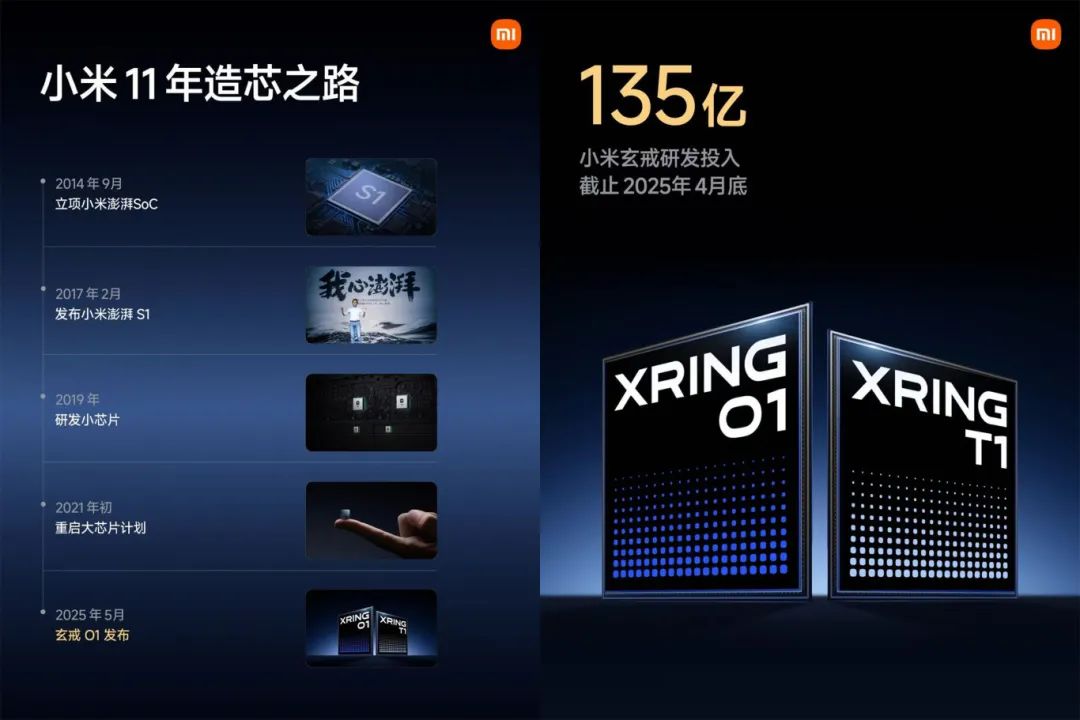
In this environment, since April, amidst high expectations, we've witnessed the fervor of the Shanghai Auto Show, with the tug-of-war between automakers reaching an unprecedented stage. However, as practitioners, a series of unexpected events have also revealed the market's volatility.
Since its inception, Xiaomi, a 15-year veteran in the consumer electronics market, never anticipated that the automotive industry's challenges would be as formidable as those it had previously faced.
Currently, in the realm of self-developed SoC chips, Xiaomi has overcome numerous hurdles, investing 13.5 billion yuan to produce the self-designed mobile phone SoC chip - Xuanjie O1, aiming to break the technological blockade in the high-end chip field.
Therefore, when Xiaomi YU7 officially unveils its complete form in the automotive market, its primary objective is self-evident.
In the pure electric vehicle market priced between 200,000 and 300,000 yuan, the aggressiveness of Chinese brands is evident from the market situation surrounding Tesla Model 3 and Model Y. Hence, for Xiaomi YU7, product strength competition is a necessity at this stage.
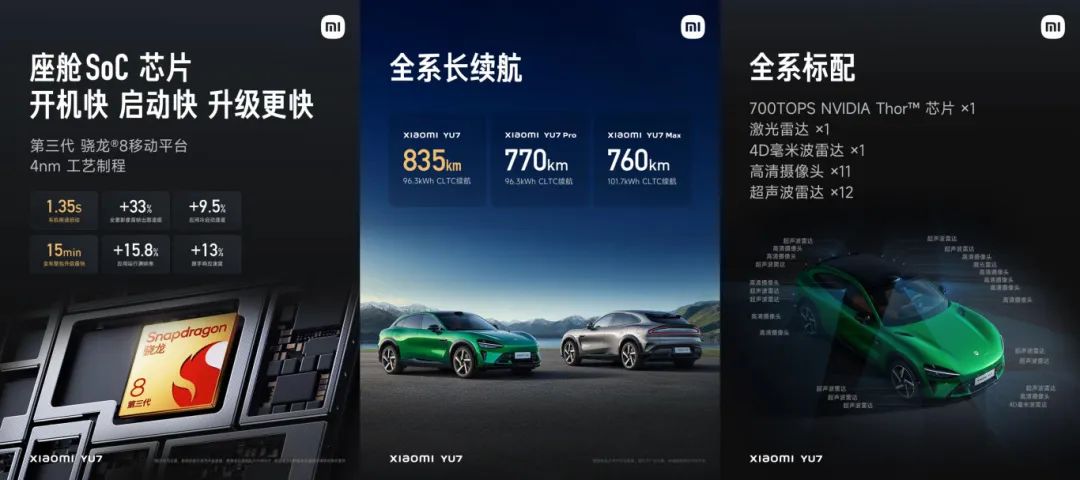
Last March, when the Xiaomi SU7 was launched, we saw Lei Jun providing potential users with all related emotional value to enhance its sporty characteristics. To connect with the Xiaomi ecosystem, the SU7 embodied Xiaomi's essence in every detail.
The subsequent story is well-known. Orders surged, and delivery times were indefinitely extended. Xiaomi SU7 instantly became the industry's focal point, a traffic king, and a sales dark horse. Against the backdrop of new automakers gradually fading from the limelight, Xiaomi Automobile is confronting all traditional automakers head-on with its own strength.
Similarly, a year later, in terms of product strength alone, the latecomer YU7 must advance further than the SU7. Modifications made after listening to market suggestions, whether in design, electric performance, or intelligent equipment advantages, are bound to meet all consumer expectations for the YU7's combat effectiveness.
However, amidst other simultaneous debuts by 'big players,' after the market cleared out speculators and the refreshed Tesla Model Y showed strong offensive power, will the transformation in this market segment unfold as anticipated?
Furthermore, as consumers' enthusiasm for speed wanes and online hype for electric vehicle performance fades, can the 'sporty' label boasted by any new car still benefit the automaker? It's difficult to say at this juncture.
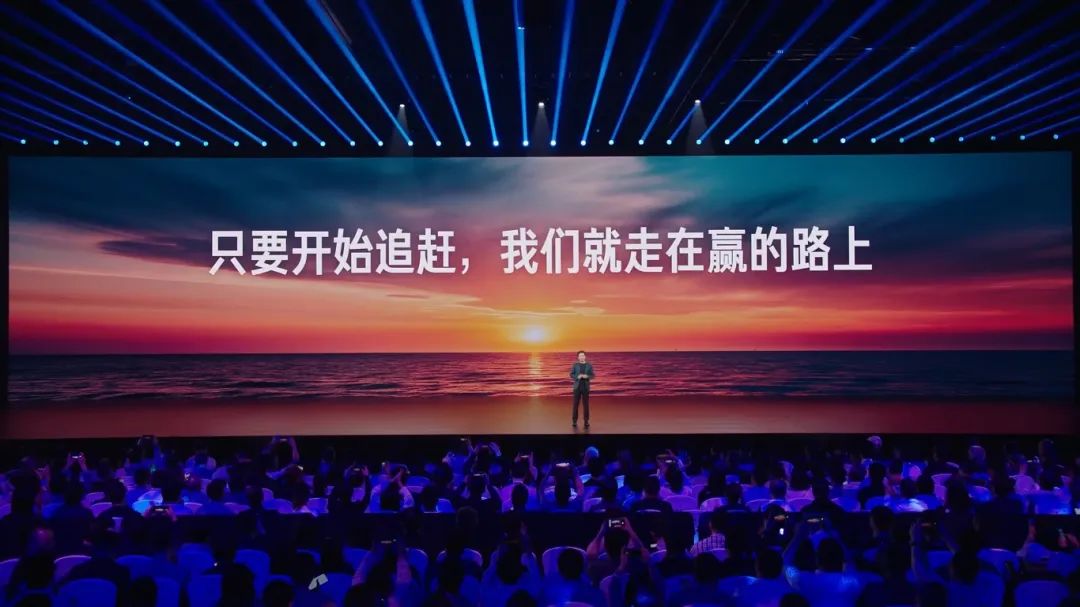
In summary, when Xiaomi YU7 chooses this moment to introduce itself to consumers and showcase Xiaomi's refinement in automaking, it's just one aspect. As an industry newcomer no longer enjoying the novice protection period, Xiaomi Automobile must clearly understand the industry's development trend and consumers' true attitudes towards new offerings.
In this fiercely competitive new era, it's not that we fear product deficiencies but rather actions taken without a clear understanding of the market situation, which can be exploited for criticism. Xiaomi has a high starting point in automaking, and I hope YU7 can learn from SU7's market battles over the past year, truly pleasing Chinese users.
Editor-in-Charge: Li Sijia, Editor: He Zengrong


